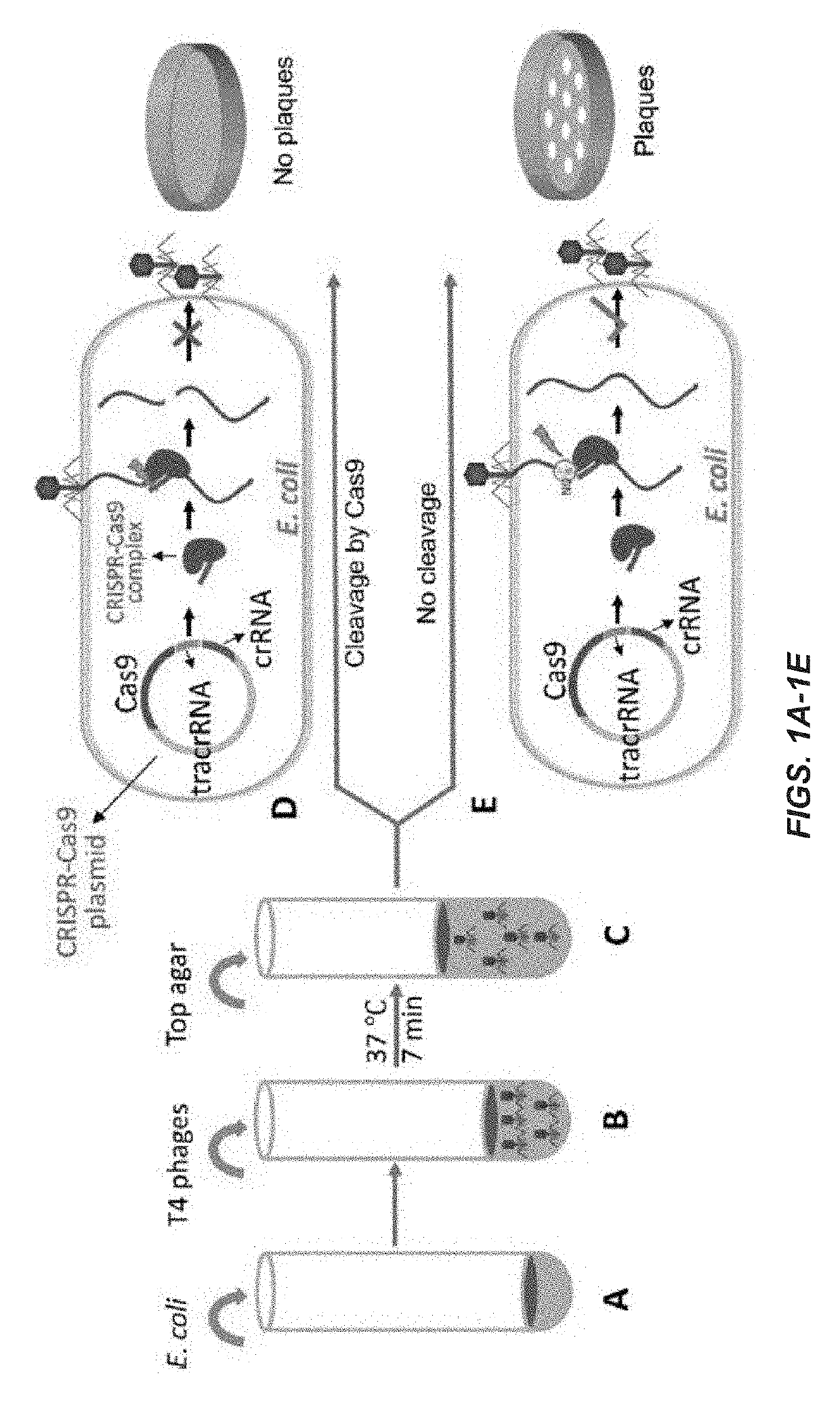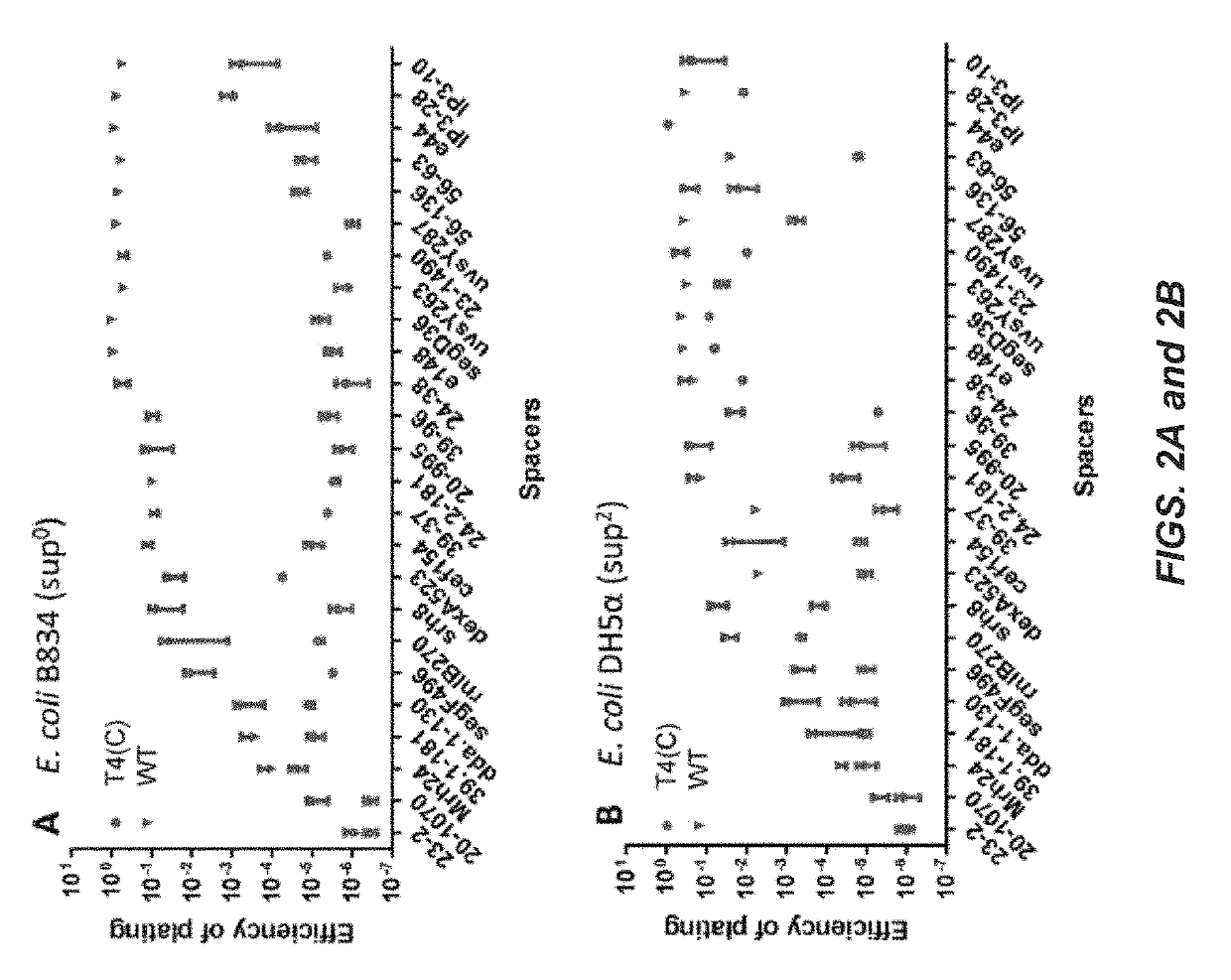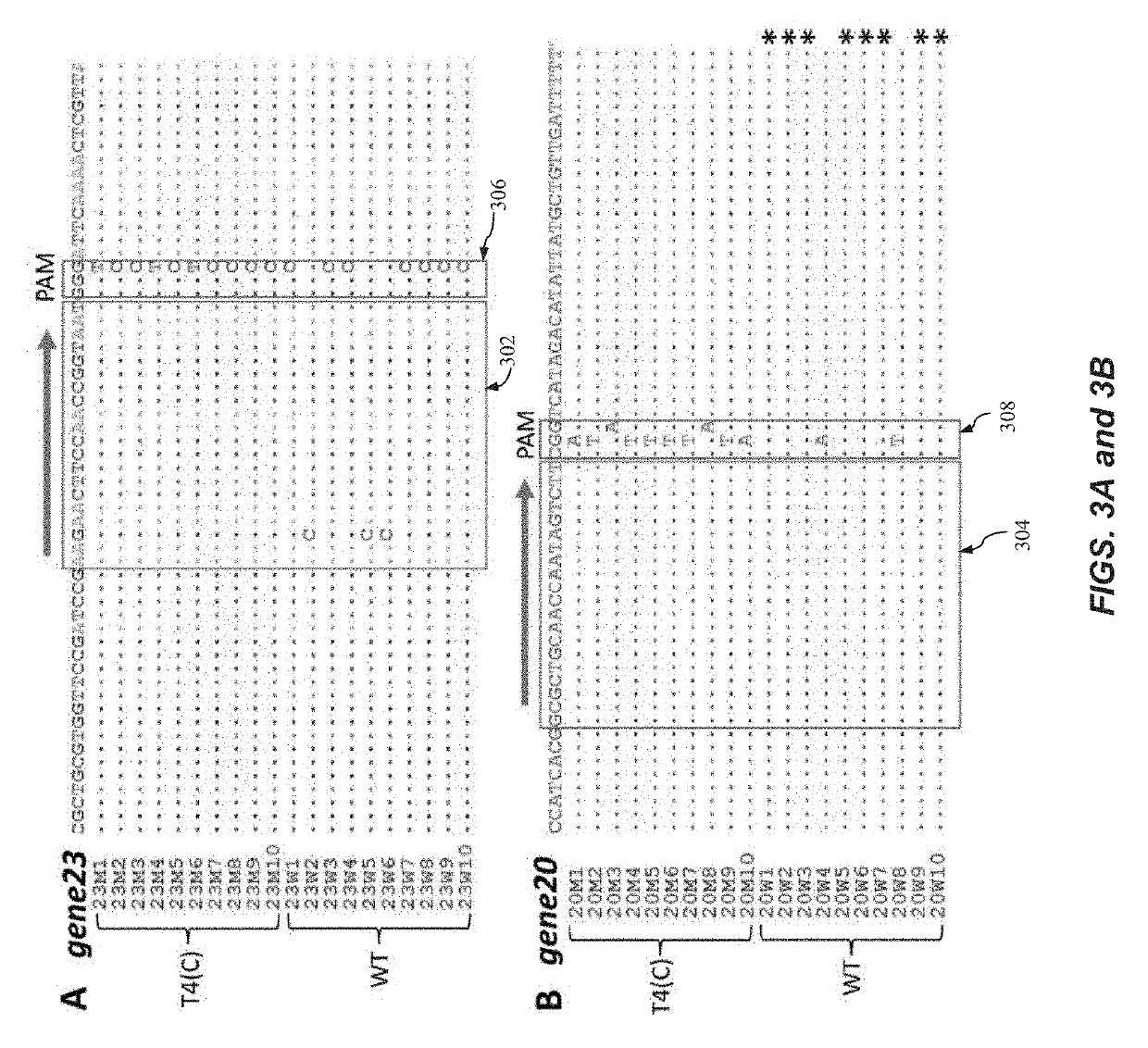Engineering of bacteriophages by genome editing using the crispr-cas9 system
a genome editing and genome technology, applied in the field of engineering of bacteriophages, can solve the problem of tedious classic genetic strategies
- Summary
- Abstract
- Description
- Claims
- Application Information
AI Technical Summary
Benefits of technology
Problems solved by technology
Method used
Image
Examples
example 1
Materials and Methods
Bacterial and Bacteriophage Strains
[0144]E. coli strains DH5α (hsdR17(rK-mK+) sup2), CR63 (sup1λr), B834 (hsdRB hsdMBmet thi sup0), P301 (sup0), and B40 (sup1) were used in the experiments described below. WT T4 phage was propagated on E. coli P301(sup0) as described previously (46). T4(C) is a mutant containing an amber mutation at amino acid 58 of gene 42 that codes for dCMP hydroxymethylase and an amber mutation at amino acid 124 of gene 56 (30) that codes for dCTPase (19). To prevent accumulation of spontaneous revertants, the T4(C) mutant was propagated on E. coli B834 (hsdRB hsdMB met thi sup0) for only one generation. The T4(C) phage stocks containing revertant phage at a frequency of −6 were used for all the experiments. For some experiments, the T4(C) phage was propagated on suppressor-plus E. coli strain CR63 to produce phage with modified cytosines in the genome.
Plasmids
[0145]CRISPR-Cas9 spacer plasmids were constructed by cloning spacer sequences int...
example 2
[0157]Cytosine Modification of Phage T4 Genome Inhibits, but does not Block, Restriction by CRISPR-Cas9 Nuclease
[0158]FIGS. 1A-1E illustrate an experimental scheme for testing the effect of CRISPR-Cas on phage T4 infection according to one embodiment of the present invention. E. coli cells containing a CRISPR-Cas plasmid (˜3×106 cells) shown in FIG. 1A are mixed with phage T4 (up to 106 PFU), as shown in FIG. 1B. FIG. 1C shows that after incubation at 37° C. for 7 minutes, top agar is added and the mixture is poured onto LB plates. The plates are incubated overnight at 37° C. FIG. 1D shows that cleavage by CRISPR-Cas9 nuclease at the protospacer sequence disrupts the phage genome resulting in loss of plaque-forming ability. FIG. 1E shows that if the genome is resistant to Cas9 cleavage, plaques form at frequency similar to that of the control vector plasmid. See Materials and Methods for more details.
[0159]To determine if the ghmC-modified WT T4 genome may be inactivated by CRISPR-C...
example 3
Creation of Specific Mutants by Editing of T4 Genome Using CRISPR-Cas9
[0165]FIGS. 4A-4F illustrate experimental scheme for phage T4 genome editing using CRISPR-Cas9 according to one embodiment of the present invention. T4 phage infections were performed according to the basic scheme shown in FIGS. 1A-1E. FIG. 4A is a schematic illustrating E. coli containing only the spacer plasmid leads to restriction of phage infection. FIG. 4B is a schematic illustrating E. coli containing both the spacer plasmid and a Cas9-resistant donor plasmid allows arms
[0166]of the donor plasmid DNA. The resultant recombinant phages are released following lysis. FIG. 4C is an image showing plating of the phage lysates from various infections. FIG. 4D illustrates spot-test of a random plaque generated from E. coli containing only the donor plasmid. FIG. 4E illustrates spot-test of a random plaque generated from E. coli containing both the CRISPR plasmid and the donor plasmid. Spot tests were done on lawns of...
PUM
| Property | Measurement | Unit |
|---|---|---|
| Digital information | aaaaa | aaaaa |
| Length | aaaaa | aaaaa |
| Nucleic acid sequence | aaaaa | aaaaa |
Abstract
Description
Claims
Application Information
 Login to View More
Login to View More - R&D
- Intellectual Property
- Life Sciences
- Materials
- Tech Scout
- Unparalleled Data Quality
- Higher Quality Content
- 60% Fewer Hallucinations
Browse by: Latest US Patents, China's latest patents, Technical Efficacy Thesaurus, Application Domain, Technology Topic, Popular Technical Reports.
© 2025 PatSnap. All rights reserved.Legal|Privacy policy|Modern Slavery Act Transparency Statement|Sitemap|About US| Contact US: help@patsnap.com



